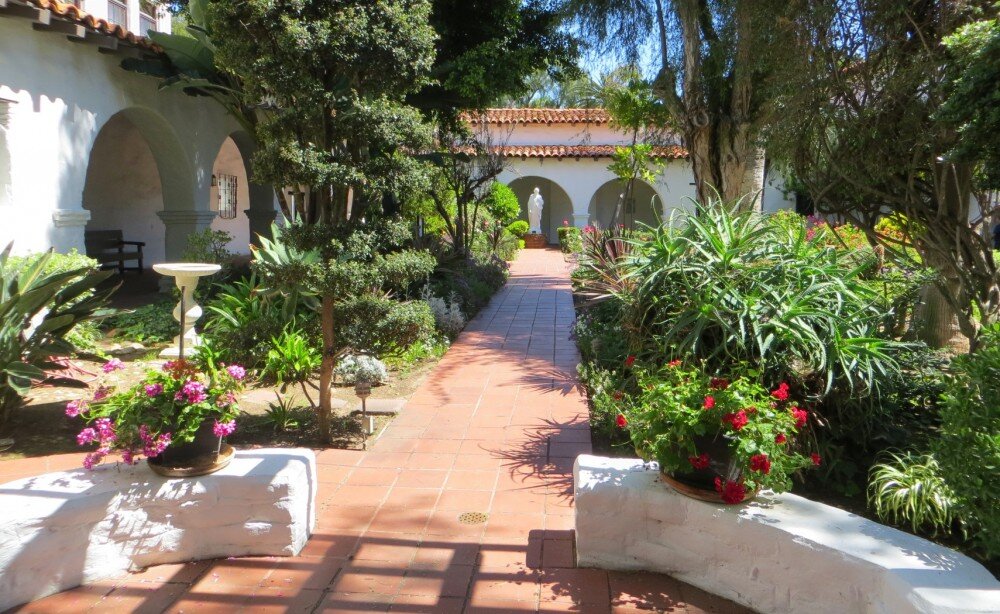
The Gardens of Mission San Diego
Cultivation, Care and Maintenance
“A garden is a planned space usually outdoors, set aside for the display, cultivation or enjoyment of plants and other forms of nature, as an ideal setting for social or solitary human life.” (Merriam-Webster’s Student Dictionary)
As stewards of the sacred grounds of Mission San Diego, we continue to plant, cultivate and preserve the gardens. This new section of our history website is being designed to give a history of the land from pre-contact to present day. Please join us as we develop this page to showcase our gardens and the accompanying management.
We will have identifying photos of the plants.
A history of the olive trees will be featured soon!
Please check out our newest video which shows our vigilance to protecting our Gardens (see below):
Canary Island Date Palm
Video of Palm Tree Removal at the Mission
Natural Gardens Providing Food for Native Americans
Agave
➢Acorns
➢Chia (a kind of sage) they called it pa-sal; dried chia, rich in oil, chia seeds were pounded into meal and cooked.
➢Cactus - mountains and desert - the seeds, fruit and stalks were eaten
➢Yucca - fruit eaten - fibers used for nets, baskets, mats, sandals, straps, cradles, hairbrushes.
➢Pinions ~ pine nuts
➢Agave - century plant - cooked stalks.
➢Juniper tree - berries.
Chaparral - the original landscaping
For thousands of years, the indigenous population cared for their lands. The Kumeyaay people knew, respected, and preserved their land. They were not an agrarian people, but they knew well how to propagate the plants that nature provided. There is a school of thought that if we employed the cultural burning techniques that had been used by the Indigenous people, we would not be experiencing the wildfires so common today.
Riparian Area Along San Diego River
•Riparian refers to an area where water and land abut. Riparian land provided different plants not found in the chaparral landscape. The branches of willow trees that grew along the riverbanks were used to build the Kumeyaay éwaa (house). Willow was also used for many other things such as medicine and clothing.



